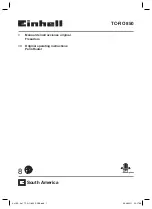
1-11
Cisco 7204 Installation and Configuration Guide
OL-5101-02
Chapter 1 Product Overview
Physical Description
Input/Output Controller
The Input/Output controller shares the system memory functions and the environmental monitoring
functions for the Cisco 7204 router with the network processing engine.
Note
Detailed instructions for removing and replacing the I/O controller are contained in the configuration
note
Input/Output Controller Replacement Instructions
. The configuration note is also available on
Cisco.com.
The I/O controller consists of the following components:
•
Dual EIA/TIA-232 channels for local console and auxiliary ports. The console port has full DCE
functionality and a DB-25 port. The auxiliary port has full DTE functionality and a DB-25 plug.
•
An optional Fast Ethernet port, equipped with either a single MII port (see
Figure 1-7
) or an MII
port and an RJ-45 port (see
Figure 1-8
), that is configurable for use at 100 megabits per second
(Mbps) full-duplex or half-duplex (half-duplex is the default). The I/O controller without the Fast
Ethernet port is shown in
Figure 1-9
.
Note
When you use the I/O controller that is equipped with an MII port and an RJ-45 port, only one port can
be configured for use at a time. Although still supported by Cisco Systems, the I/O controller equipped
with the single MII port was discontinued as an orderable product in May 1998.
•
NVRAM for storing the system configuration and environmental monitoring logs. NVRAM uses
lithium batteries to maintain its contents when disconnected from power.
•
Flash memory SIMM for storing the boot helper image.
•
Two PCMCIA slots for Flash Disks or Flash memory cards, which contain the default Cisco IOS
software image.
•
Boot ROM for storing sufficient code for booting the Cisco IOS software.
•
Two environmental sensors for monitoring the cooling air as it enters and leaves the Cisco 7204
chassis.
















































